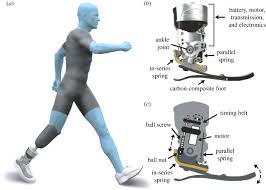Introduction: Redefining Mobility Through Innovation
In the world of prosthetics and tototogel, few innovations have had as transformative an impact as the FlexFoot. Designed to enhance mobility and functionality for individuals with lower limb amputations, the FlexFoot represents a remarkable blend of engineering, biomechanics, and user-centric design. This revolutionary prosthetic device has not only improved the quality of life for countless individuals but has also paved the way for advancements in adaptive technology.
The Biomechanics of Human Movement
Human mobility is a complex interplay of bones, muscles, tendons, and joints working together in perfect harmony. The foot, in particular, plays a critical role in maintaining balance, absorbing shock, and propelling the body forward during walking or running. When an individual loses a limb, the intricate mechanics of movement are disrupted, leading to significant challenges in mobility.
Prosthetic devices like the FlexFoot aim to replicate these natural biomechanics. By understanding the forces exerted during movement and the ways in which the human foot responds to various terrains, engineers have been able to design prosthetics that mimic the functionality of a natural limb. This requires a deep understanding of biomechanics, material science, and ergonomic principles.
What Sets FlexFoot Apart?
FlexFoot stands out as a groundbreaking innovation in the field of prosthetics due to its unique design and advanced materials. Unlike traditional prosthetics, which often prioritize stability over flexibility, the FlexFoot is engineered to provide dynamic energy return and natural movement. Here are some of the key features that make FlexFoot a game-changer:
1. Energy-Storing Carbon Fiber
One of the most innovative aspects of the FlexFoot is its use of carbon fiber materials. Carbon fiber is both lightweight and incredibly strong, allowing the prosthetic to store and release energy efficiently. During each step, the FlexFoot compresses under the weight of the user and then releases the stored energy, propelling the user forward. This “energy-storing” feature replicates the spring-like action of a natural foot, making it particularly beneficial for activities like running and jumping.
2. Ergonomic Design
The design of the FlexFoot prioritizes comfort and adaptability. Its contoured shape aligns closely with the natural motion of the lower leg, providing a smooth and seamless walking or running experience. The flexibility of the device ensures that users can navigate uneven terrains with ease, reducing the risk of discomfort or injury.
3. Customization Options
FlexFoot prosthetics are available in various models tailored to specific needs, from everyday mobility to high-performance sports. This customization allows users to choose a design that best suits their lifestyle, ensuring optimal performance and comfort.
Advancing Adaptive Mobility
The introduction of the FlexFoot has had a profound impact on adaptive mobility, particularly for amputees who wish to lead active and athletic lives. By enabling a wider range of motion and improved energy efficiency, the FlexFoot has empowered individuals to participate in activities that were once considered beyond their reach.
Empowering Athletes
For athletes with amputations, the FlexFoot has been a game-changer. Paralympic champions and recreational athletes alike have embraced this technology for its ability to enhance performance. The device’s dynamic energy return and durability make it ideal for sports like running, cycling, and even long-distance hiking.
Revolutionizing Rehabilitation
In rehabilitation settings, the FlexFoot has been instrumental in helping amputees regain confidence and independence. The prosthetic’s intuitive design encourages natural movement patterns, making it easier for users to adapt and rebuild their mobility skills.
The Science Driving the Future
As prosthetic technology continues to evolve, the principles behind the FlexFoot are inspiring a new wave of innovations. Researchers are exploring ways to integrate advanced sensors and AI to further enhance the functionality of prosthetics. For example, smart prosthetics with real-time feedback capabilities could provide users with greater control and adaptability, opening up new possibilities for personalized mobility solutions.
Additionally, advancements in material science are paving the way for even lighter and more durable prosthetic devices. The incorporation of graphene and other cutting edge materials could further enhance the performance of devices like the FlexFoot, making them more accessible to a broader range of users.
A Step Toward the Future
The FlexFoot represents more than just a prosthetic device it embodies the resilience of human innovation and the drive to overcome limitations. By combining advanced engineering, ergonomic design, and a deep understanding of biomechanics, the FlexFoot has transformed the lives of countless individuals, empowering them to reclaim their mobility and independence.
As we look to the future, the science behind FlexFoot serves as a reminder of what’s possible when technology and humanity intersect. With continued research and development, the possibilities for adaptive mobility are boundless, promising a world where everyone can step forward with confidence and grace.
